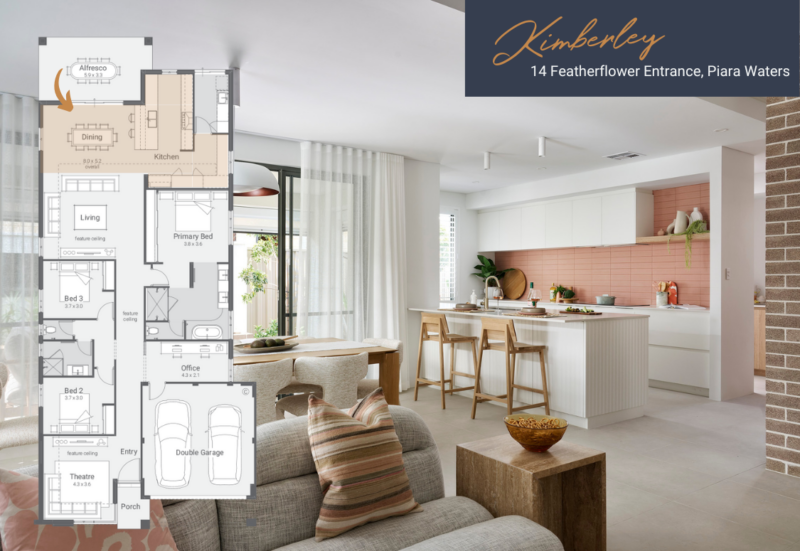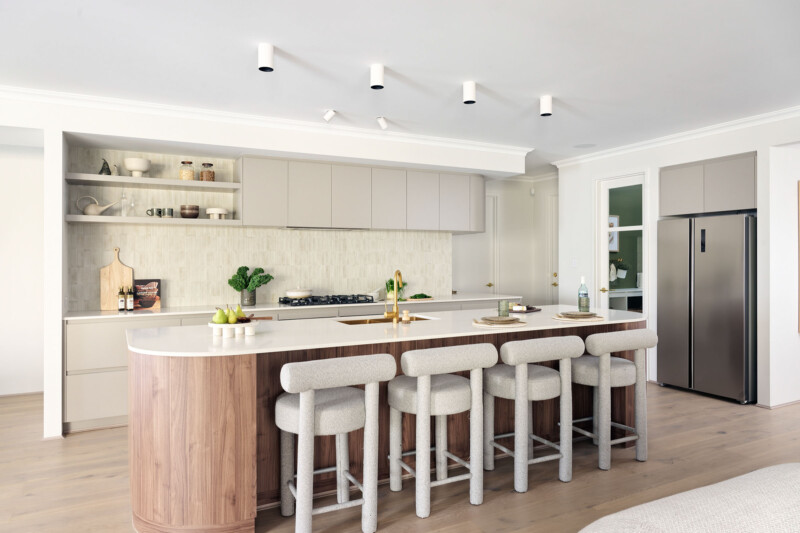How to Read a Floorplan
For anyone thinking of building – whether that be a new home for themselves or for property development, the first step generally involves browsing homebuilder websites and visiting countless display homes to try and get a basic idea of what house you can build on your block or what house and land packages present the best value for money.
You might find two floor plans from two different builders which look pretty similar – both homes are a similar size, have the same number of bedrooms and bathrooms plus a gourmet kitchen but there is a $50,000 difference in price. How does that happen?
You might think by choosing the cheaper builder you are saving money. But the most likely explanation is that you are not comparing apples with apples. Nine times out of ten when you compare floor plans side-by-side you are not looking at the complete picture.
The trick when comparing floor plans is to remember you are comparing apples and oranges and you cannot make an informed comparison until you are armed with all the necessary information.
So what else do you need?
Outlined below are helpful tips that will help you identify which floor plan offers the best value for money.
1. Consider Inclusions vs. Upgrades.
The specification list is just as important as the floor plan. It will tell you what materials will be used to build your home, what quality tiles and floor coverings are on the floor, your choice of fixtures and fittings, what brand appliances are in your home plus much more. This document alone identifies the difference between low quality or excellent value for money. A $50,000 price difference in floor plans can often be explained by examining the specification list.
You’d be surprised how much we offer as standard with our Dale’s Specification. For example, locally made cabinetry by The Maker and My Air smart home air-conditioner controller.

2. Identify Key Areas.
Think about your current space and how you function in it. It is likely your priorities will be your kitchen/living area, number of bedrooms and study and/or theatre. Once you identify your non-negotiables it’ll be easier to filter through floorplans.
Pro Tip: Don’t forget the total area size. If you are comparing two floor plans and one is jam-packed with a study, theatre, kids activity, plus 4 bedrooms and 2 bathrooms, and the other has your 4 bed 2 bath, plus study and theatre, but both have the same total area – it means you’ll receive a small, cramped home rather than an expansive and functional floorplan fitted with plenty of storage, room to grow and a sizeable yard.
Always remember, bigger is not necessarily better unless the total floor size increases too!

3. Visit Display Homes.
Walking through the home and experiencing it for yourself is the smartest thing you can do. Explore display homes even if the floorplan may not suit you – physically being in the space is very different than looking at it on a screen.
It will give you the best sense of proportions, spaciousness, quality, design and ambience. It might even give you some furnishing ideas.
Pro Tip: Display homes are fitted out with all the bells and whistles, so remember to consider your inclusions and understand what is an upgrade. The New Homes Consultant in the home can identify these for you.

4. Consider Contracts + Hidden Things.
It is important to remember the floor plan is just one page of the sales contract and there is plenty of other details that are easy to miss. Ask these questions:
– How many variations are you entitled to make?
– Is it a fixed price contract? If so, what other fees, charges and penalties apply?
– Standard ceiling and door heights? This greatly impacts the spaciousness of the home.
– Who are the trusted suppliers and trades? Do they have strong relationships with the builder and are the materials high quality and some even made locally? (Hint: Our cabinetry is made here in Perth by The Maker!).
– Maintenance and structural warranties: When you build with Dale Alcock Homes you receive a 12 month service warranty and a 25 year structural warranty.

Always remember, who you choose to build your home is just as important as what home you decide to build. You want to partner with a reputable builder who won’t go broke in the middle of your home building process. You want to build with an awarded builder who has significant industry experience and strong relationships with trusted suppliers. You can’t put a value on good customer service and a seamless homebuilding process is worth its weight in gold, especially compared to 18 months of potential anguish and headaches.
If you are comparing two floor plans and one is cheaper – think carefully about your expectations throughout the building process. Either way, both options are a big financial decision, you’ll want to go with the trusted, quality builder who can deliver the dream of home ownership seamlessly.
If you are in the process of comparing floor plans for your new home and would like a helping hand, contact Dale Alcock Homes today. Our experienced New Home Consultants are available for an obligation-free discussion and will show you what to look for when comparing floor plans.
Visit our Display Homes
Make a day of it and see how we seamlessly blend functionality and style in our homes.
Blog: Considering Design & Inclusions
We’ve gathered 3 valuable tips for reviewing floorplans, focusing on design, style, and functionality, while highlighting the key features that will make your home uniquely yours.
Why You Should Build Now
Have you been waiting for interest rates to come down? Prices to decrease? Unsure whether now is the right time to build a new home? We have been through these economic cycles many times in our 36 years of operation.
